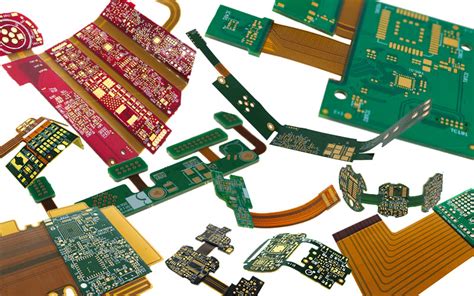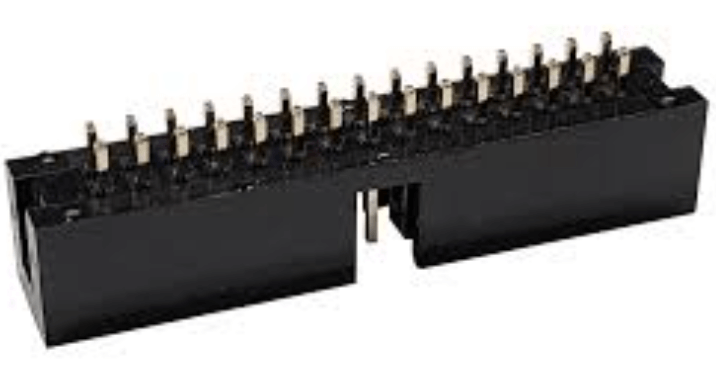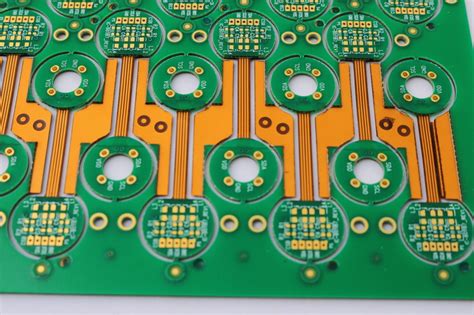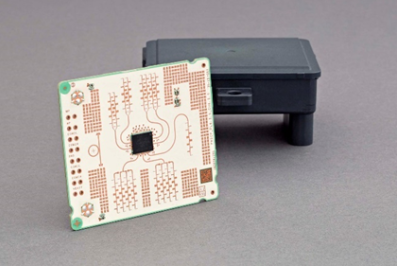PCB production process: addition or subtraction?
Addition or subtraction? The comparison of three PCB production processes and the initial exploration of similar carrier board technology are as follows:
The process of PCB products (including IC carrier boards) mainly includes subtractive process (Subtractive), full additive process (Full Additive Process, FAP) and modified semi additive process (Modified Semi Additive Process, mSAP).
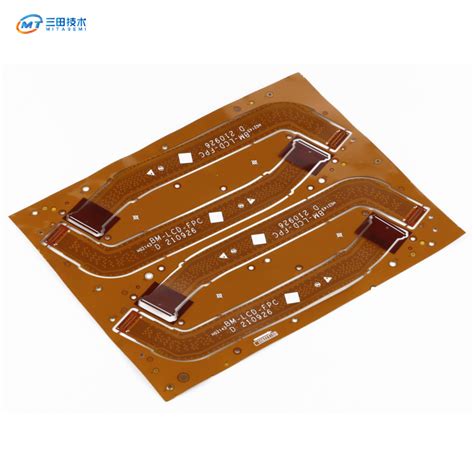
1.Introduction to PCB subtractive process
The subtractive process is a method of selectively removing part of the copper foil on the surface of the copper foil laminate to obtain a conductive pattern. The subtractive process is the main method for printed circuit manufacturing today. Its biggest advantage is that the process is mature, stable and reliable.
Printed circuits manufactured by the subtractive process can be divided into the following two categories.
2.Non-plating-through-hole Board
This type of printed board is produced by screen printing and then etching the printed board, and can also be produced by photochemical method. Non-perforated plated printed boards are mainly single-sided boards, and there are also a small number of double-sided boards, which are mainly used for televisions and radios. The following is the production process of single-sided boards:
Single-sided copper-clad board unloading-photochemical method/screen printing image transfer-removal of anti-corrosion printing material-cleaning and drying-hole processing-shape processing-cleaning and drying-printing solder mask-curing-printing marking symbols-curing-cleaning and drying-pre-coating flux-drying-finished product.
3.Plating-through-hole Board
On the copper-clad laminated board that has been drilled, chemical plating and electroplating are used to make the holes between two or more conductive patterns from electrical insulation to electrical connection. This type of printed board is called a perforated plated printed board. Perforated plated printed boards are mainly used for computers, programmable switches, mobile phones, etc. According to different electroplating methods, it is divided into graphic electroplating and full-board electroplating.
(1) Pattern Plating: On a double-sided copper-clad laminate, a conductive pattern is formed by screen printing or photochemical methods, and a corrosion-resistant metal such as lead-tin, tin-cerium, tin-nickel or gold is plated on the conductive pattern.
The corrosion-resistant agent outside the circuit pattern is then removed and etched. The pattern plating method is further divided into the pattern plating and etching process and the bare copper solder mask process (Solder Mask On Bare Copper, SMOBC). The process flow of making a double-sided printed circuit board using the bare copper solder mask process is as follows.
Double-sided copper-clad laminate: unloading, punching positioning holes, CNC drilling, inspection, deburring, chemical thin copper plating, electroplating thin copper, inspection, brushing, film pasting (or screen printing), exposure and development (or curing), inspection and plate repair, pattern electroplating copper, pattern electroplating tin-lead alloy, film removal (or removal of printing material), inspection and plate repair, etching, lead and tin removal, circuit break test, cleaning, solder mask pattern, plug nickel/gold plating, plug tape, hot air leveling, cleaning, screen printing mark symbol, shape processing, cleaning and drying, inspection, packaging, finished product.
(2) Panel Plating: On the double-sided copper-clad laminate, copper is electroplated to the specified thickness, and then the image is transferred by screen printing or photochemical method to obtain a corrosion-resistant positive circuit image, and the resist is removed after corrosion to make a printed circuit board.
The full-board plating method can be further divided into the plugging method and the masking method. The process flow of making a double-sided printed circuit board by the masking method (Ten tin g) is as follows.
Double-sided copper-clad board: unloading, drilling, hole metallization, full-board electroplating and thickening, surface treatment, photomasking dry film, positive conductor pattern, etching, film removal, plug electroplating, shape processing, inspection, printing solder mask, solder coating, hot air leveling, printing marking symbols, finished product.
The advantages of the above method are simple process and good uniformity of coating thickness. The disadvantages are waste of energy and difficulty in manufacturing through-hole printed boards without connection pads.
4.Advantages and disadvantages of subtractive method
The subtractive method is the earliest and most mature PCB manufacturing process. Generally, it refers to the use of photochemical method, screen printing pattern transfer or electroplating pattern anti-etching layer on the copper-clad board, and then using chemical etching to etch away the copper foil of the non-graphic part, or mechanically removing the unnecessary part to make a printed circuit board.
However, in the chemical etching process, the etching process is not carried out vertically downward from the surface, but will be etched on both sides of the channel at the same time, that is, there is a phenomenon of side etching, which causes the bottom width of the etched channel to be greater than the top. Due to the existence of side etching, the application of subtractive method in fine circuit production is greatly limited. When the line width/line spacing requirement is less than 2mil, the subtractive method will not be applicable due to the low yield.
At present, the subtractive method is mainly used to produce ordinary PCB, FPC, HDI and other printed circuit board products.
II. Introduction to PCB additive method
The method of selectively depositing conductive metal on the surface of insulating PCB substrate to form conductive patterns is called additive method.
- Advantages of additive method
The advantages of using additive process to manufacture printed circuit boards are as follows:
(1) Since the additive method avoids a large amount of copper etching and the resulting large amount of etching solution treatment costs, the production cost of printed circuit boards is greatly reduced.
(2) The additive process reduces the number of processes by about 1/3 compared with the subtractive process, simplifies the production process and improves production efficiency. In particular, it avoids the vicious cycle of higher product grade and more complex process.
(3) The additive process can achieve flush wires and flush surfaces, so that SMT and other high-precision printed circuit boards can be manufactured.
(4) In the additive process, since the hole wall and the conductor are electrolessly copper plated at the same time, the thickness of the copper plating layer on the hole wall and the conductive pattern on the board surface is uniform, which improves the reliability of the metallized hole and can also meet the requirements of copper plating in small holes of printed circuit boards with high aspect ratio.
- Classification of additive processes
The additive manufacturing process of printed circuit boards can be divided into the following three categories:
(1) Full Additive Process is an additive process that only uses chemical copper deposition to form conductive patterns. Take the CC-4 method as an example: drilling-imaging-adhesion enhancement treatment (negative phase)-electroless copper plating-removal of resist. This process uses catalytic laminates as the substrate.
(2) Semi-additive Process is an additive process that uses chemical deposition of metal, combined with electroplating and etching, or a combination of the three to form conductive patterns on the surface of an insulating substrate. The process flow is: drilling – catalytic treatment and adhesion enhancement treatment – chemical copper plating – imaging (electroplating resist) – pattern electroplating copper (negative phase) – removal of resist – differential etching. The substrate used for manufacturing is ordinary laminate.
(3) Partial Additive Process: Printed circuit boards are manufactured by additive method on catalytic copper-clad laminates. Process flow: imaging (etching resistance) – etching copper (positive phase) – removal of resist layer – full board coating electroplating resist – drilling – chemical copper plating in the hole – removal of electroplating resist.
- Disadvantages and advantages of the full additive process
The full additive process refers to the process of electroplating a copper circuit pattern on a substrate containing a photosensitive catalyst without copper foil after printing a circuit on the substrate, forming a printed circuit board with a chemical copper plating layer as the circuit. Since the circuit is added to the printed circuit board later, it is called the additive process.
The full additive process is more suitable for making fine circuits, but because it has special requirements for the substrate and chemical copper deposition, and the bonding force between the copper plating and the substrate is also very strict, it is quite different from the traditional PCB manufacturing process, the cost is high, the process is not mature, and the current output is not large.
The full additive process can be used to produce WB or FC flip chip substrates, and its process can reach less than 10μm.
- The rise of the semi-additive method to meet the needs of the times
The semi-additive method refers to covering the substrate with thin copper in advance with photoresist (D/F), exposing it to ultraviolet light and then developing it to expose the required areas, and then using electroplating to thicken the copper thickness of the formal circuit on the circuit board to the required specifications, and then removing the photoresist, and then removing the excess copper layer under the photoresist through flash etching, and the remaining copper layer forms the required circuit.
The characteristic of the semi-additive method is that the formation of the circuit mainly depends on electroplating and flash etching. In the flash etching process, since the etched chemical copper layer is very thin, the etching time is very short, and the lateral etching of the circuit is relatively small. Compared with the subtractive method, the width of the line will not be affected by the thickness of the electroplated copper, it is easier to control, has a higher resolution, and the line width and line spacing of the fine line are almost the same, which can greatly improve the yield of the fine line.
The semi-additive method is currently the main method for producing fine lines. The mass production capacity can reach a minimum line width/line spacing of 14μm/14μm and a minimum aperture of 55μm. It is widely used in the manufacture of fine circuit substrates such as CSP, WB and FC flip chip substrates.
- Market trend: from HDI to substrate-like, from subtractive method to mSAP semi-additive process
At present, the mainstream advanced HDI boards in mobile phone motherboards are manufactured by subtractive process. After upgrading to substrate-like, the process requirements have reached 30/30 microns, so the subtractive method will no longer be used, and the mSAP semi-additive process needs to be adopted, which is similar to IC substrates.
From the subtractive method of HDI to the mSAP semi-additive method of SLP-like substrates, more copper plating steps are designed into the process, the required copper plating capacity has increased significantly, and the demand for exposure equipment (more complex process) and bonding equipment (increased number of product layers) has also increased.
At present, the main participants in the preparation of substrate-like capacity include advanced HDI manufacturers and IC substrate manufacturers.
For HDI manufacturers, since the process is upgraded from the subtractive method to the mSAP semi-additive method, new equipment investment is required, and a learning curve of yield climbing is required.
For IC substrate manufacturers, since the production of substrates itself adopts the mSAP process, there are no obstacles in the production of substrate-like substrates in terms of technology and yield. However, since the circuit fineness requirements of substrate-like substrates are not as high as those of IC substrates, and the requirements for equipment are relatively loose, IC substrate manufacturers may face the risk of declining profit margins when entering the production of substrate-like substrates.
In general, in the competition landscape of substrate-like boards, HDI manufacturers are temporarily at a disadvantage in terms of technology and yield, but may have an advantage in cost, while IC substrate manufacturers have no problems in technology and yield, but are at a disadvantage in cost control.

